
Tuna Takes the Singlehanded Farallones
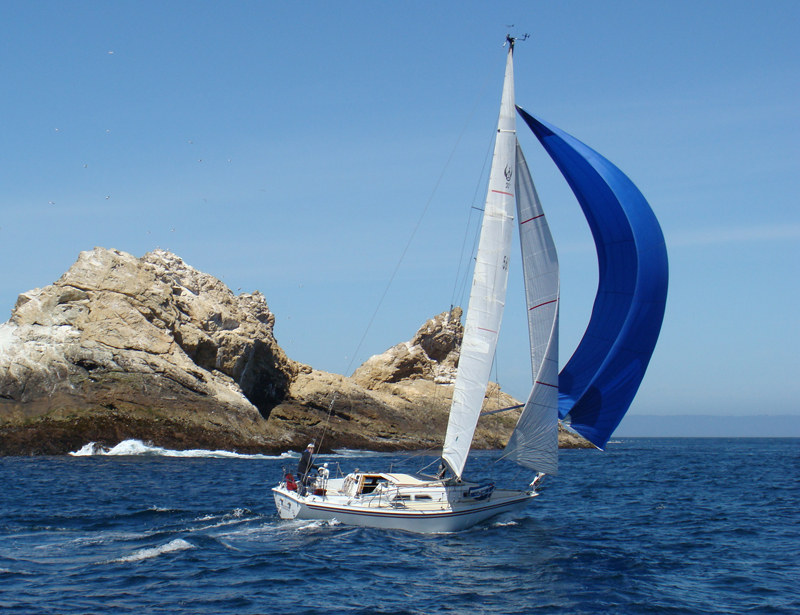
©2008 Latitude 38 Media, LLC
The smallest and slowest-rated finisher in Saturday’s Singlehanded Farallones Race — Stephen Buckingham’s Santana 22 Tchoupitoulas — took overall honors by a margin of more than three minutes. Buckingham bested the 64 other starters in the 58-mile race which began in light-air and a moderate ebb, the combination of which caused some premature starts.
It didn’t take long for the breeze to fill in from the northwest and gradually build to a high of about 20 knots, accompanied by only the odd wave larger than four feet. In addition to a lighter-air zone around the island, a hole off Pt. Bonita frustrated more than a few tired sailors on the way home and reshuffled the fleet. The first finisher on elapsed time was Jeffrey Lebesch who arrived home just before 6 p.m. with his Hammerhead 54 trimaran Hecla, the fastest-rated boat in the fleet. By a little after 9 p.m. all 65 starters had finished or been accounted for. Provisional results are available at: www.sfbaysss.org
Cruisers to the Rescue
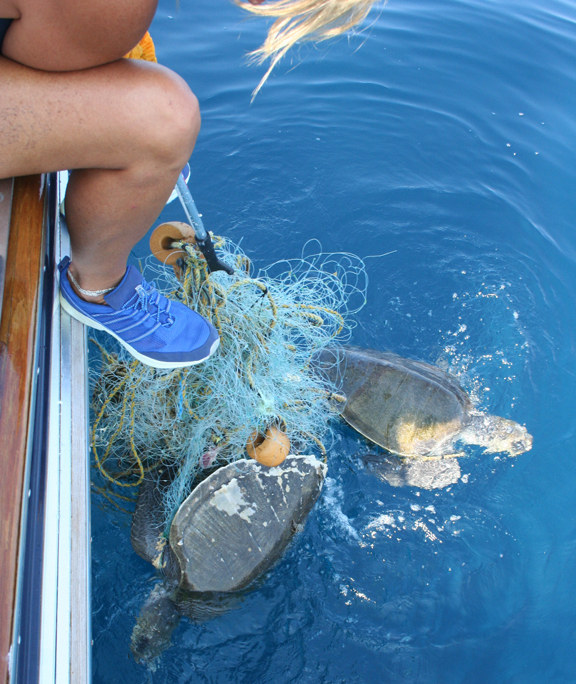
By law, every mariner is required to keep a lookout at all times. The rule, of course, was made to help vessels avoid collisions. But sometimes there are additional benefits to watchkeeping — such as saving a life or two.
Such was the case recently when Reylyn Yarussi of the sailboat Tropical Dance scanned the surface and saw what she thought were two turtles. . . then a wad of netting and some floats. On further investigation, she, her partner Dan and crewman Andy Conlin realized that the poor creatures were hopelessly tangled in the netting.
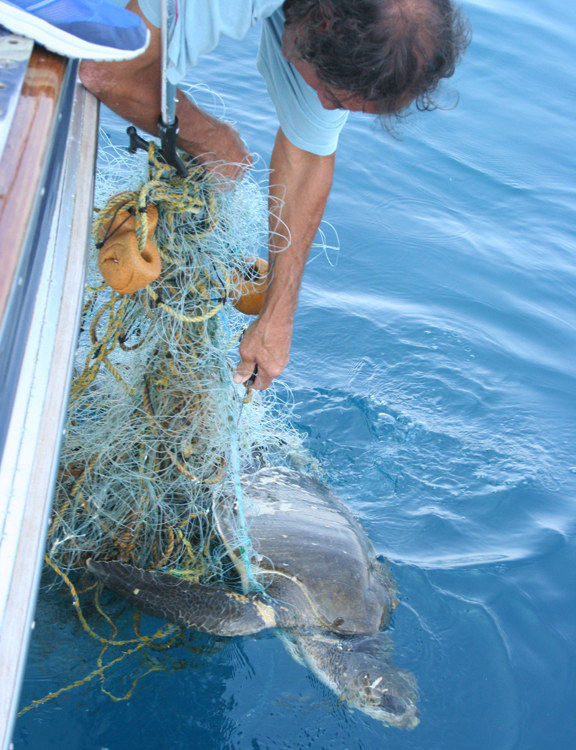
While Reylyn tugged the net up along the side of Tropical Dance, Dan gradually cut it away from the immobilized turtles, and within 20 minutes they we both freed. As if the job wasn’t tough enough, given the boat’s 6 foot freeboard, a baby shark was also tangled in the net. It’s fate is unknown.
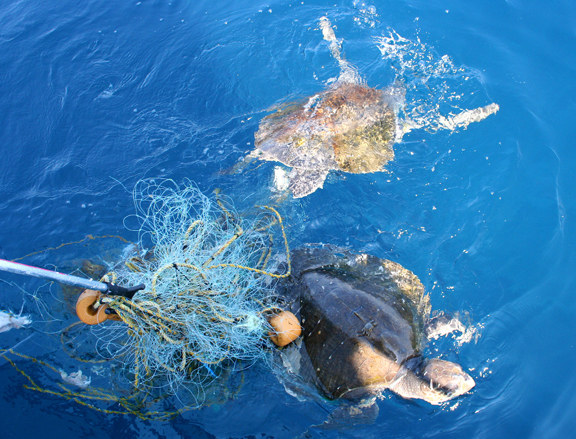
BMW Oracle Makes Opening Day Appearance
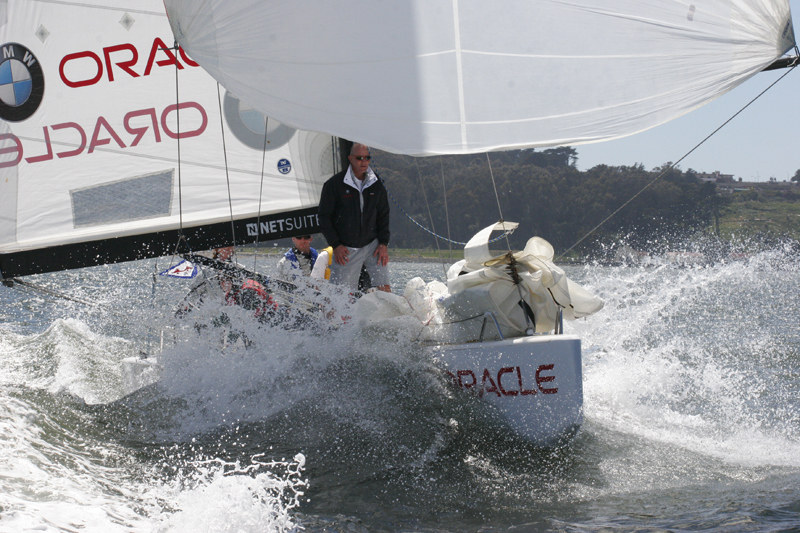
BMW Oracle Racing team members John Kostecki, Melinda Erkelens, Tom Ehman, Ian Burns, Jono MacBeth and Joe Spooner made an appearance on the Bay this weekend for some sailing and good old-fashioned public relations. At the Golden Gate YC on Friday the team treated local media, a few club members and high school sailors from the City to a well-rehearsed talk show moderated by the team’s external affairs director Tom Ehman. So what did we learn? BMW Oracle Racing is building a 150-ft foiling trimaran a lá Yves Parlier’s Mediatis with stepped hulls which at rest give it a LWL of only 90 feet. . . Just kidding. We learned very little about what they’re up to. Our assurances that we could keep a secret weren’t enough to get more than the official story line, "We’re building a boat but we can’t say what kind; we can’t say how big other than it will be 90-ft on the waterline; we can’t say when or where we’ll launch it. . . ." Kostecki did tell us that the boat will likely have wheel-steering, for what it’s worth, and that they will require a crane to get the mainsail aboard the boat.
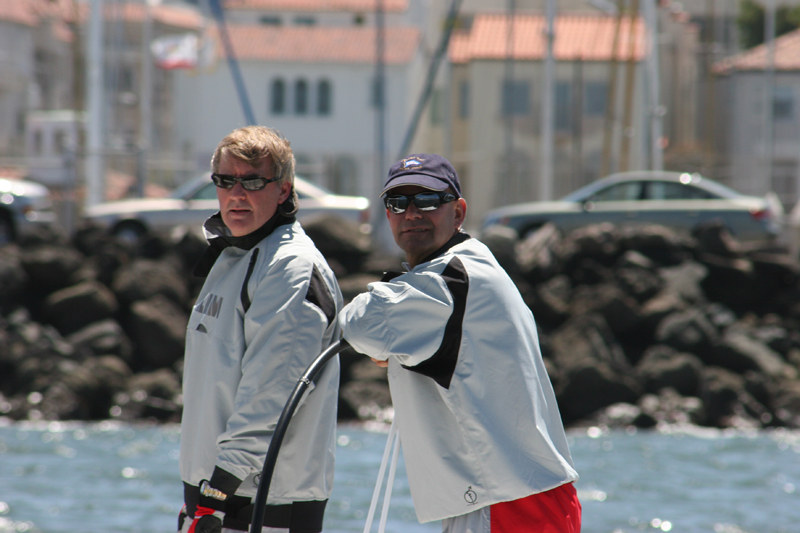
Perhaps the most interesting thing to come out of the presentation was hearing the sailors talk about the differences in the multihull sailing. For instance Spooner, a grinder used to the short-burst grinding involved with the V5 IACC boats, said he’s already lost nearly 25-lbs as he’s transitioned to the endurance-oriented requirements of the larger multihulls. An example — it takes nearly a minute and a half to raise the furled gennaker on an ORMA 60 like Groupama 2 on which they’ve been practicing. On a V5 IACC boat it takes only seven seconds to raise a downwind sail.
One thing was apparent from the presentation — these guys are amped about sailing multihulls. "It’s new and exciting," Kostecki said. "The learning curve is steep and it’s just more fun when you’re learning something new." After the presentation, which also highlighted Oracle’s $15,000 donation to the Golden Gate YC’s high school sailing program, the Oracle sailors took the group of high school kids out for an afternoon of match-racing practice aboard the team’s Swedish Match 40s — truancy notices be damned!
Vallejo Race Fee Deadline Today
If you’re planning on doing the Vallejo Race on May 3-4 and haven’t signed up yet, you might want to consider signing up online today to avoid late fees. Signing up is easy, just visit www.yra.org. You can find all your racing info including events like the Vallejo Race in the 2008 Northern California Sailing Calendar and YRA Master Schedule, available at our World Headquarters in Mill Valley, wherever you get your copy of Latitude 38, or online at the link above.
